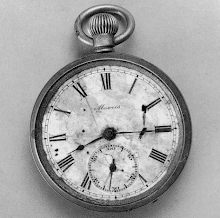In the house directly opposite from the site, resident Christine Dieterich stood with Harold G. Bailey, Jr., her lawyer. Dieterich voiced concerns during two restoration advisory board meetings about the safety and health of her family, especially her two children, during the cleanup and demolition. She requested the Army Corps relocate her during the cleanup, but the Corps refused twice. In the case of an accident, the Corps had provided a 742-foot safety zone surrounding the house. However, the perimeter decreased to 194 feet, based on the probability of finding chemicals rather than munitions. The Corps already briefed some residents living within the zone, like Dieterich, on what to do in the case of an accident. Dieterich was instructed Nov. 28 on the voluntary "shelter in place" program, in which residents remain inside their homes during an accident.
The munitions date to between 1917 and 1920, when American University was home to an Army munitions experimentation team that fired munitions into then-undeveloped woods and buried materials in unmarked pits there. Those woods were subsequently subdivided into the Spring Valley community ... Even before this stage of the cleanup, workers had removed more than 500 munitions items, 400 pounds of laboratory glassware and more than 100 tons of soil contaminated with arsenic and other hazardous substances from 4825 Glenbrook. Officials believe another burial pit remains under the home's southeast corner, and determined that removing the house is the only viable cleanup option.
December 5, 2012 (pg. 1)
The razing of 4825 is the latest effort by the US Army Corps of Engineers to clean up pits of chemical waste that are a legacy of World War I weapons testing. Facing mustard-gas bombs in the trenches of Europe, the Army summoned chemists to make poisons at the American University Experiment Station. When the war ended and the experiments stopped, soldiers dumped bombs and chemical waste in pits. Those pits are now in the yard of the South Korean ambassador's residence, the edge of American University, and under 4825 Glenbrook. Tearing down the house is the easy part. In February or March, bomb technicians will dig under the house. They expect to unearth munitions and glassware coated with toxic chemicals such as arsenic, the major compound in lewisite, a poison dubbed “the dew of death."
November 29, 2012
.jpg)
.jpg)
.jpg)
.jpg)
.jpg)

.jpg)
.jpg)
.jpg)
.jpg)
.jpg)
.jpg)
.jpg)
.jpg)

















.jpg)

.jpg)









